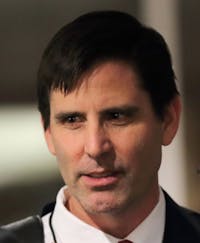No more blackouts anywhere in the world with 100% wind, water, and sunlight
The biggest question facing the transition by countries, states, and cities to 100% clean, renewable energy is whether variable energy sources, such as wind and solar, can be combined with storage and transmission to meet variable demand, or whether blackouts will occur.
To address this issue colleagues at Stanford University, UC Berkeley, and Aalborg University in Denmark examined the ability of 20 world regions, encompassing 139 countries, to avoid blackouts after all energy sectors are electrified or powered with direct heat, and the electricity and heat are provided with 100% wind, water, and sunlight (WWS). All energy sectors include electricity, transportation, heating/cooling, industry, and agriculture/forestry/fishing.
The study, "Matching Demand With Supply at Low Cost in 139 Countries Among 20 World Regions With 100% Intermittent Wind, Water, and Sunlight (WWS) for all Purposes" was published this week in the journal, Renewable Energy.
The paper builds on a previous 2015 study that examined the ability of the lights to stay on in the 48 contiguous United States. In that study, only one scenario was modeled. Some criticized the previous paper as relying too much on adding turbines to existing hydroelectric dams to increase their peak electricity production and for relying too much on heat and cold storage. Regardless of whether the criticisms were reasonable, we demonstrate here that such assumptions are not necessary to the conclusion that grids can stay stable with 100% clean, renewable energy systems.
The tools used for the study were a global weather prediction computer model and a “grid integration” model that simulates matching energy demand with energy supply, storage, and assumed transmission. The weather prediction model was used to predict electricity output from onshore and offshore wind turbines, solar photovoltaics on rooftops and in power plants, concentrated solar power plants, and solar thermal plants over time, accounting for realistic weather and climate conditions during the years 2050-2054. In the model, the energy collectors were located in each of 139 countries. The modeled time-dependent wind and solar electricity and heat data were combined with time-dependent electricity production estimates from geothermal power plants, tidal and wave devices, and hydroelectric power plants, and with estimates of heat generation from geothermal reservoirs, as inputs into the grid integration model.
Additional inputs into the grid integration model included specifications of electricity, heat, cold, and hydrogen storage, specifications of a simplified transmission system, and specifications of electricity, heat, cold, and hydrogen energy demand over time. The 139 countries considered, which represent more than 99% of world emissions, were then broken into 20 world regions. These included large regions, such as Africa, Australia, Central America, Central Asia, China, Europe, India, the Mideast, North America, Russia, South America, and Southeast Asia, and island regions, such as Cuba, Haiti/Dominican Republic, Iceland, Jamaica, Japan, New Zealand, the Philippines, and Taiwan.
For each region, the grid integration model was used to see if supply could be combined with storage and transmission to match demand and the resulting cost of energy. If supply could not match demand or if the costs were too high, implementing 100% clean, renewable energy would be difficult if not impossible.
The main result of the study is that blackouts were avoided at low cost in all 20 regions for all five years examined and under three different storage scenarios, including one with heat pumps but no hot or cold energy storage, two with no hydropower turbines added to existing hydropower dams, and one with no battery storage. The fact that no blackouts occurred under three different scenarios suggests that many possible solutions to grid stability with 100% WWS are possible, a conclusion that contradicts previous claims and perceptions that the grid cannot stay stable with such high penetrations of just renewables.
Energy costs can be viewed in at least two ways. One is the cost per unit energy and a second is the total money paid by consumers. In terms of cost per unit energy of just energy (ignoring health and climate costs for now), the 100% WWS systems costs the same as or less than a fossil-fuel system. Including the health and climate costs of fossil fuels, the 100% WWS system costs one-fourth that of a fossil-fuel system.
Even more relevant, because a 100% WWS system requires 42.5-58% less energy than an equivalent fossil fuel system, a similar cost per unit energy (again ignoring health and climate costs) means that the 100% WWS system may cost consumers 42.5-58% less total money out of their pockets. Accounting for health and climate costs means that consumers pay one-eighth out of their pockets for a 100% WWS system than for a fossil-fuel system.
A final major conclusion of this study is that the wind turbines required to run this 100% WWS system worldwide in 2050 themselves reduce global temperatures sufficiently to offset 3% of global warming to date beyond displacing fossil fuel emissions. The reason is that the turbines reduce water evaporation, and water vapor is a greenhouse gas that enhances warming. Because global warming has increased water evaporation, causing temperatures to rise more than they otherwise would have, the turbines serve to offset part of this rise. Because the turbines reduce water vapor rapidly, their temperature benefit is also rapid.
In sum, we present a practical technique and set of options to avoid blackouts while solving the global warming, air pollution, and energy security problem the world faces. Like the solution to any major problem, this one requires the collective willpower of individuals, towns, cities, states, and countries. The good news is that the problem is solvable.


